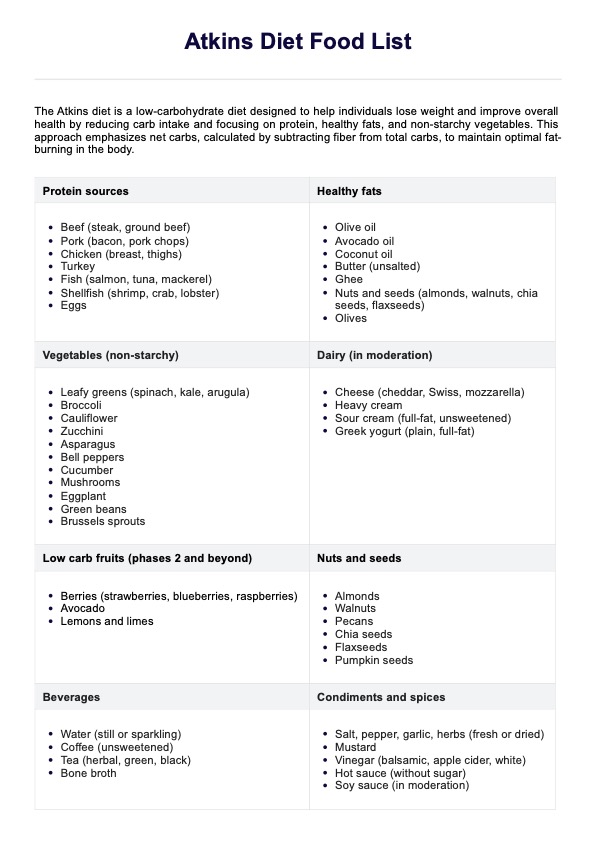On the Atkins diet, you can eat low-carb foods such as meat, fish, eggs, non-starchy vegetables, nuts, seeds, and healthy fats like olive oil. As you progress through the diet phases, you can gradually add more carbs, including fruits and whole grains.

Atkins Diet Food
Explore Carepatron's Atkins Diet Food List and guide patients to a low-carb diet for effective weight loss and health optimization.
Atkins Diet Food Template
Commonly asked questions
In the first two weeks of the Atkins 20 diet, particularly during Phase 1, individuals can lose anywhere from 5 to 15 pounds, depending on factors like starting weight and adherence to the low-carb guidelines. Results vary, but this rapid initial loss is common with very low-carb diets.
Yes, the Atkins diet is a proven effective low-carb diet, with numerous studies supporting its success in weight loss and improving metabolic health. It has been shown to reduce body weight, lower high blood pressure, and improve blood sugar levels, making it a viable option for many.
EHR and practice management software
Get started for free
*No credit card required
Free
$0/usd
Unlimited clients
Telehealth
1GB of storage
Client portal text
Automated billing and online payments











